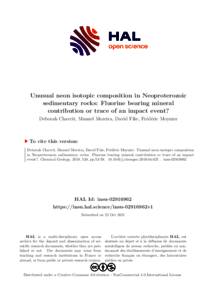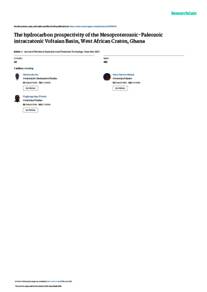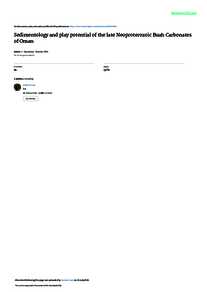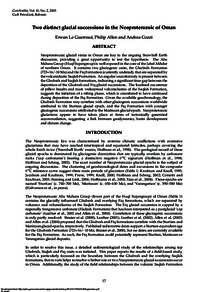Document
A composite reference section for terminal proterozoic strata of southern Namibia.
Identifier
DOI: 10.2110/jsr.68.1223
Source
Journal of Sedimentary Research. v. 68, 6, p. 1223-1235
Contributors
Country
Oklahoma
City
Tulsa
Publisher
SEPM Society for Sedimentary Geology.
Gregorian
1998-12-01
Language
English
English abstract
Integrated sequence stratigraphie and chemostratigraphic data yield a framework for correlations of stratigraphie units in the terminal Proterozoic to Cambrian Witvlei and Nama Groups of Namibia. Coupled with precise U-Pb zircon age constraints, these correlations make it possible to construct a composite reference section for use in calibrating terminal Proterozoic chronostratigraphy. The Namibian reference section starts with two distinct glacial horizons and extends up to within 1 million years of the Proterozoic-Cambrian boundary. The two glacial horizons may represent each of two distinct Varanger-age glaciations better known from the North Atlantic region. From the higher of the two glacial horizons up, the composite stratigraphy preserves one of the thickest and most complete available records of carbon-isotope variability in post-Varanger terminal Proterozoic seawater. Four carbon-isotope chemostratigraphic intervals are recognized: (1) a postglacial negative δ13C excursion (Npg interval); (2) a rising interval (Pr interval) of increasing positive δ13C values; (3) a falling interval (If interval) characterized by decreasing positive 813C and culminating in near zero or negative values; and (4) an interval of moderately positive, relatively invariant δ13C values (I interval) that extends up to the unconformity that contains the ProterozoicCambrian boundary. Each of these chemostratigraphic intervals can be recognized in widely separated correlative sections around the world. By comparing sediment accumulation rate in the radiometrically calibrated Namibian stratigraphy with sediment accumulation rates in correlative sections in Arctic Canada and Oman, a maximum age of 564 Ma is estimated for the end of the younger Varanger glaciation, 25 m.y. younger than previous estimates.
ISSN
1527-1404
Category
Journal articles





